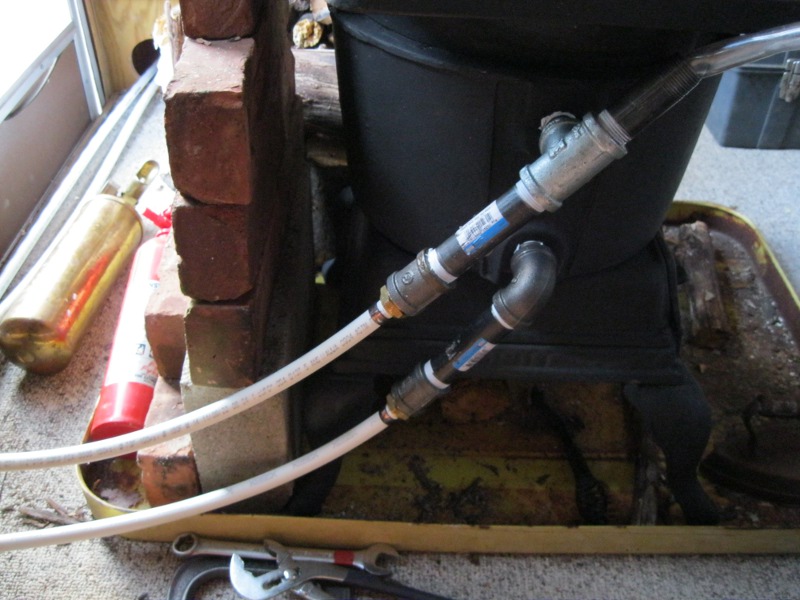How To Make A Wood Stove Boiler System For Home / Camper / RV / Trailer
Make A Fireplace Boiler Heating System
Affordable, simple wood stove radiator heating system for camper, RV or mobile home.
Step by step instructions how to make your own wood stove boiler / radiator heating system.
A fireplace is a great thing to have, especially if you are living off the grid. But a fireplace is limited to heating only the room that it is installed in. Most of the heat from a fireplace goes out the chimney, to heat the outdoors. One way to improve your home heating is to install a Homemade wood stove heat exchanger on the chimney pipe to capture some of that lost heat.
But another way to heat your home better is to make a wood stove boiler heating system. A homemade boiler heater can be installed in your house, RV, camper or trailer home. It will allow you to pump heat into the rooms farthest from the wood stove. And it does not need to be expensive either. The example shown here was under $100, and that is if we had purchased all the parts new, instead of recycling.
Antique Wood Stove Water Boiler System
The diagram below shows the system that we built. The only difference was that our antique wood stove has a built in water boiler. The heater system parts include a heat exchanger on the fireplace itself to heat up water in the pipes. Then water tubes bring the hot water to a radiator. A water pump circulates the water through the system. Then a fan blows heat through ducts in your home. A hot water expansion tank is necessary to prevent the build up of high pressure in the system. Also a water drain valve has been added for maintenance. Also necessary is a pressure relief valve. This releases water pressure in case of a failure of the expansion tank.
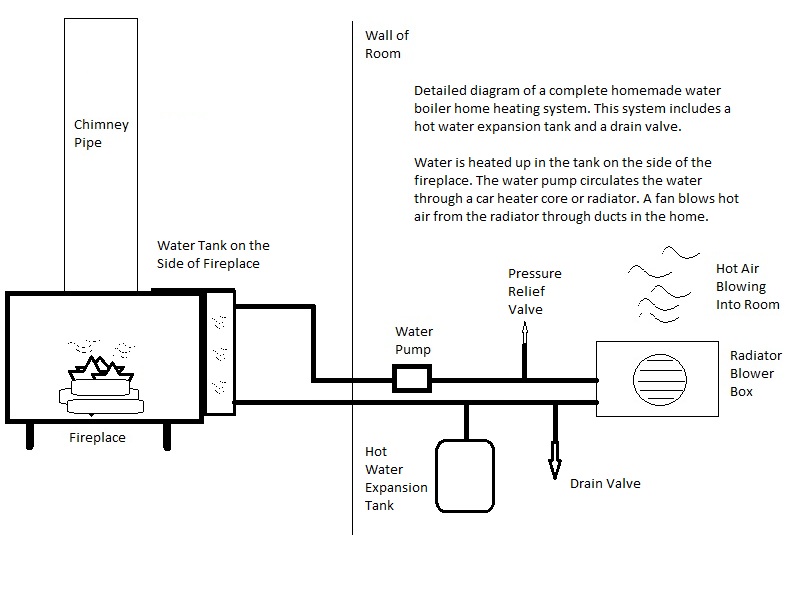
Diagram of a fireplace boiler heater system
Heating a home that already had a forced air, or central air heating system is even easier and cheaper. Most trailer homes, RVs and campers have ductwork installed for a forced air heating system. Most of these trailers have a propane heater that blows heated air through the trailer. You can use the heating ducts already in place for your new heating system.
How to make the wood stove boiler
Part 1 - Make the radiator and blower box
Please refer to the images below for the next steps. First, you need to get a car heater core. This is just like a radiator, only smaller. If you are working in a normal house, then you can get foot board radiators from a plumbing and heating supply shop for a fair price. If you are installing the heater in a camper, RV or mobile home, then a car heater core will be the best due to size restrictions of the original heating system. If you will be using household radiators, then skip down to the plumbing part of this article. A car heater core can be found used at a junk yard, or at your local auto shop for as low as $20 new. This one was free from asking around, brand new.
Make a box that perfectly fits your car heater core. The box should fit snugly, but without forcing the heater core into it. You want to protect it from damage. In the second photo below you can see the box taking shape and in the third photo you see the heater core sitting in the box frame.
In the fourth photo below you can see that the original trailer ductwork framing was mounted to the new radiator box. Your original trailer ducts are usually mounted on a metal box with round cutouts all around. The flexible ducts are attached with a hose clamp to metal lips on the box. These metal lips can usually be removed. The box is a universal fit box and made for multiple models of trailer. Remove the metal duct mounts and attach them to your new homemade heater core box.
There is only room for two ducts, but you may need more. A "T" connector may be needed to branch off the heat to more rooms, if needed.
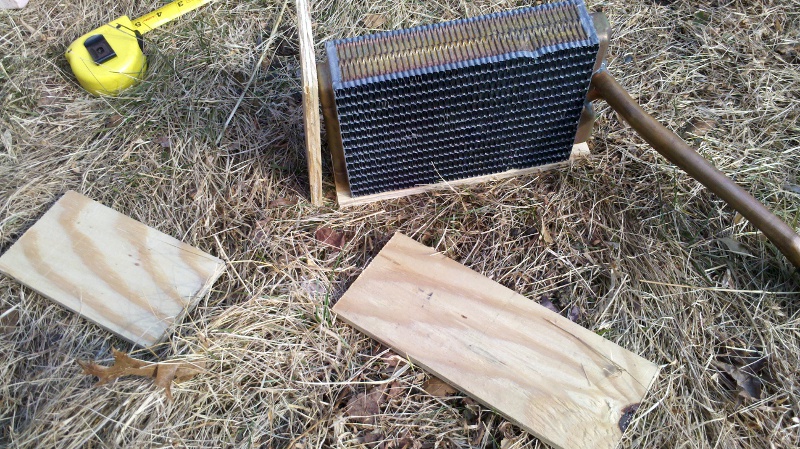
Begin making the radiator box
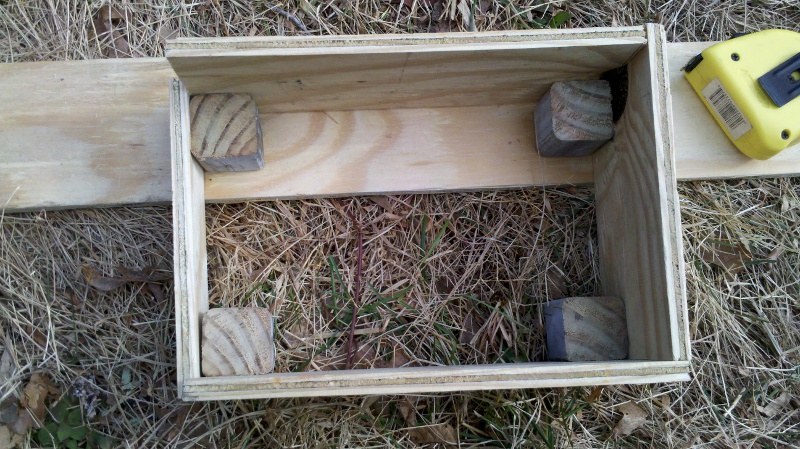
Make the radiator blower box
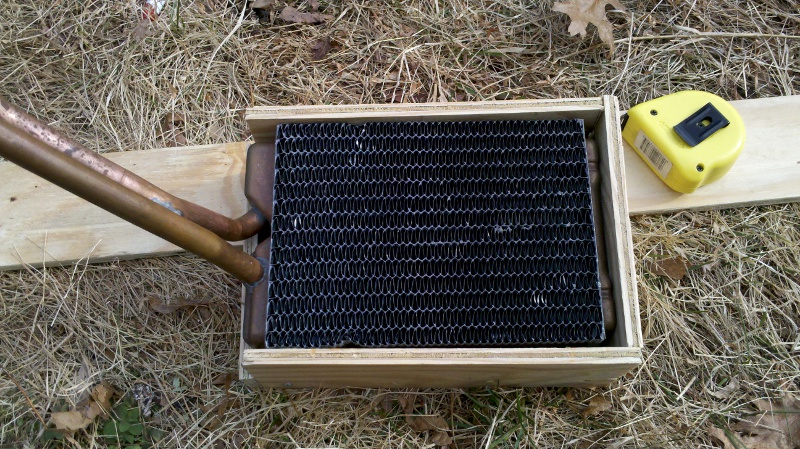
Fitting the heater core in the blower box
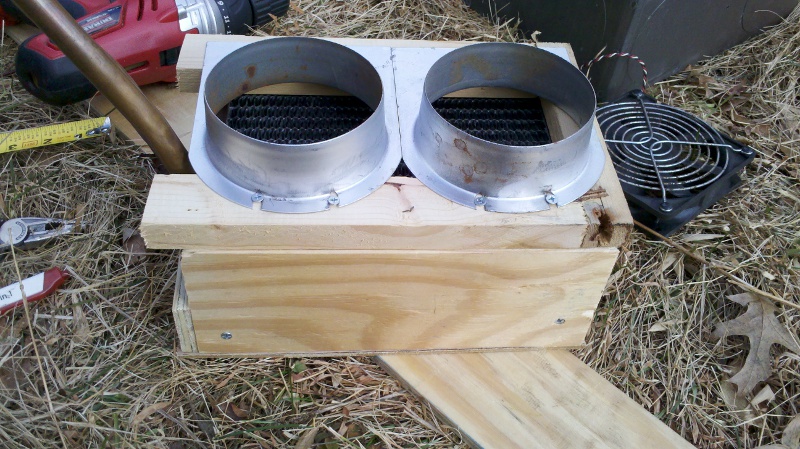
Attach ductwork to heater blower box
Find yourself a decent sized fan for the project. This will be your new heater blower fan. For our project, using a fully off grid system, we used a 12 volt computer server fan. It blows a ton of air and uses very little power. For a house on normal power, then find a suitable blower for the job.
Set the heater core safely aside, away from the work space. Now cut a thin sheet of plywood to fit the other side of your new homemade radiator box. Then use a jig saw or hole saw to cut a hole out to fit the blower fan. Notice in the photo below the use of a battery powered jig saw in our off grid contruction. In the second and third photos you can see the new blower fan being mounted onto the heater box.
Place the fan on the plywood sheet and use an ink pen or nail to mark the fan mounting holes in the blower box. Drill out the fan mounting holes in the heater box cover. Then find nuts and bolts that will fit through both the fan housing and the lid of the blower box. Attach the fan securely to the housing.
After both the heating ducts and the blower fan are assembled, then you can place the heater core inside the heater blower box. Make sure everything fits together nicely. If it is all ok, then you can assembly the heater blower box and radiator.
In the last photo, you can see that the new heater blower box is now finished.
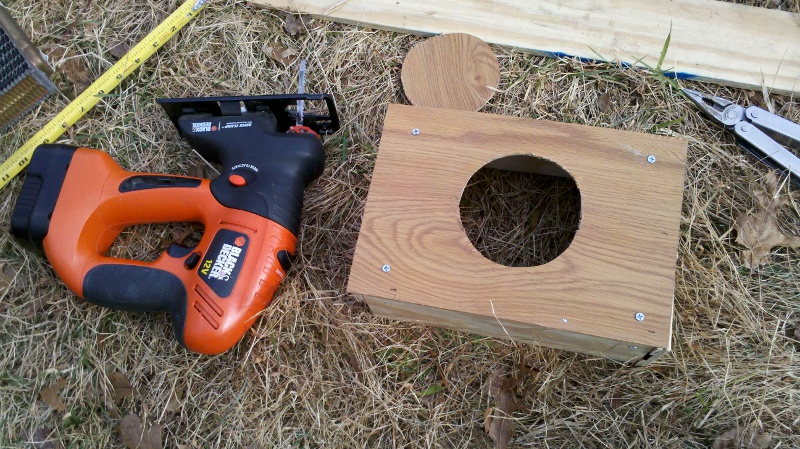
Cut hole for heater blower fan
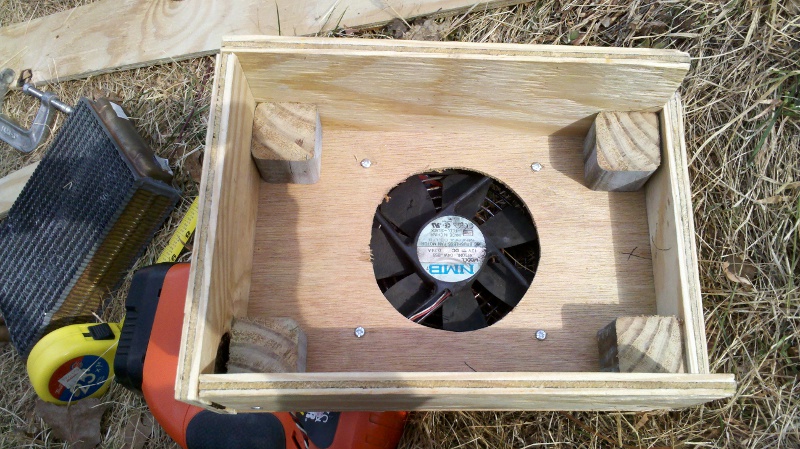
Mount Heater Blower Fan To Box
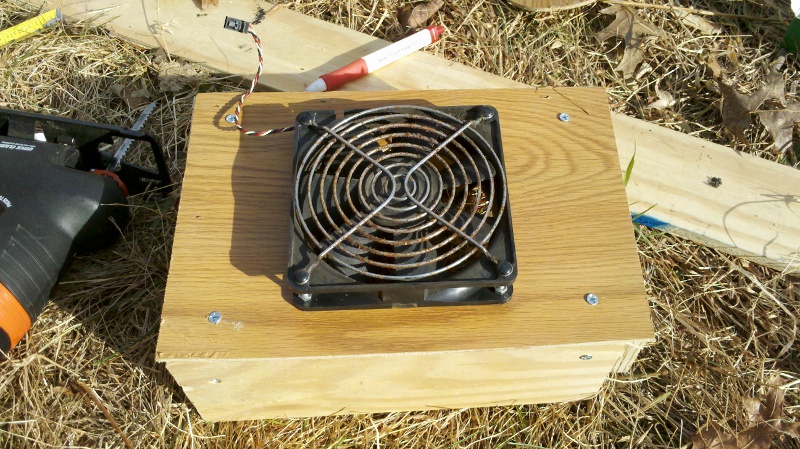
Fan Installed On Heater Blower Box
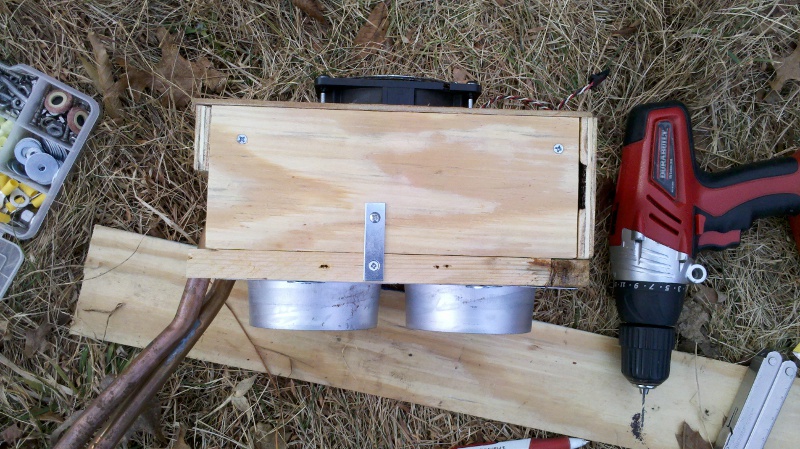
Completed Heater Blower & Radiator Box
This completes part one of the homemade hot water heating system for your home. Click DIY home boiler heating system Pt 2 for more...
Feel free to ask any questions or get help with your project on our Support Forum.
Note: Working with fire can be dangerous. Please use extreme caution when working with open flames. Extreme pressure can build up in a boiler system. Be sure to install a professional pressure release system to prevent explosion. Do NOT set this system up without an expansion tank.
About the Author
| Troy Reid |

